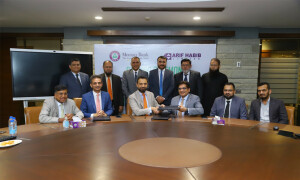Micro, small and medium enterprises (MSMEs) account for 99.7% of all enterprises in the world. MSMEs play a significant role towards boosting economic growth, poverty reduction and social inclusion across the globe. Formal MSMEs account for 16% of GDP in low-income countries and 51% of GDP of high-income countries whereas the informal enterprises account for 47% of the GDP of low-income and 13% of GDP of high-income countries.
MSMEs are labour-intensive and generating job opportunities thereby increasing the real income and standard of living of people. In this way, they can increase the social and economic participation of women, youth and minorities. These enterprises employ 78% of the labour force in low-income countries and 66% in high income countries. MSMEs act as a useful bridgehead between the informal economy of family enterprise and the formal corporate sector.
World over, half to two-thirds of all the businesses are in the form of MSMEs and in many regions this proportion is much higher. MSMEs are capable of creating job opportunities with least amount of capital which make MSMEs attractive to policymakers. However, they remain as heterogeneous group, in different organisational structure ranging from proprietorship to corporate, engage in factories to service organisational activities and with different definitions in different countries and in some countries they differ from industry to industry.
The heterogeneous nature and small size needs adequate support from organised intermediaries. These intermediaries exist in every country in different forms. International Finance Corporation (IFC) in 2010 revealed that an estimated 50-60% of MSMEs on a global level are either under-served or completely un-served. Financial institutions, globally, are considering MSME sector as an opportunity to capitalise and earn significant return on investment (ROI). Specifically in the emerging markets, banks and financial institutions are looking to tap the un-served needs in this sector. Banks around the world are looking to emerging markets for new growth opportunities. For example, in a recent publication, 'The state of global banking - in search of sustainable model', Mckinsey estimated that 60% of global banking revenue growth from 2010 to 2020 will come from emerging markets. Within emerging markets, MSME is an under-served segment. The analysis shows that formal MSMEs are more common in high-income economies, but that in low and middle-income economies, MSME density is rising at a much faster pace. The opportunity for banks to serve MSMEs in emerging markets is large. In 2010, banking revenue from MSMEs in emerging markets totalled $150 billion, or one-sixth of all emerging market banking revenues. By 2015, it is estimated that this figure will grow by around 20 percent per annum to approximately $367 billion.
According to the World Bank study, MSMEs in Pakistan account for 30% of the GDP contribute to 25% of export earnings and according to Gallup Survey in 2004 they employ 80% of the non-agriculture labour force. As the sector moves towards achieving growth and sustainability through greater market segmentation and product diversification, enterprise lending has become an increasingly important opportunity for microfinance providers (MFPs).
The MSME sector of Pakistan is heterogeneous, dispersed, and mostly unorganised. It includes diverse types of production units ranging from traditional crafts to high-tech industries. MSMEs in Pakistan account for 98% of all economic establishments. According to estimates, there are 3.8 million MSMEs in Pakistan. These MSMEs are concentrated in the trade, services and manufacturing sectors.
IFC's data shows that in Pakistan the micro-enterprises consist of 99% of total MSMEs. Unlike SMEs which operates mostly in manufacturing and services sectors, micro-enterprises are involved primarily in trade-related business. With micro enterprises residing at pyramids base, microfinance providers are well placed to meet their funding needs. While mainstreaming the MSMEs to operate at optimal levels would require developing a conducing eco system but surly one of the key components remains access to finance.
Based on the new regulations by the central bank allowing us to venture into small business finance we at Khushhalibank are poised to transform the institution from microfinance to MSME bank. We have developed necessary framework, policies and procedures and encouraged by the results of a pilot last year are scaling up our operations to the first 15 branches across the country with a target of reaching out to 3,000 small businesses in 2015.
Since this segment of the market holds great promise for the country, United States Agency for International Development (USAID) Pakistan has inked an eight-year tenure US-Pakistan Partnership for Access to Credit Agreement with Khushhalibank, to provide access to formal financing facilities for MSMEs and facilitate broad-based economic growth. The dominant aim is to encourage lending to small and medium enterprises (SMEs) in Pakistan. Of $60 million, $12.1 million is reserved for the private education sector. This partnership will serve to stimulate targeted domestic, commercially viable investments, by mitigating some of the credit risk factors that prevent access to credit by small businesses across the country. The partnership will support inclusive growth and employment across all sectors.
BR100
12,214
Increased By
488 (4.16%)
BR30
38,171
Increased By
1794.1 (4.93%)
KSE100
113,818
Increased By
4304.6 (3.93%)
KSE30
36,013
Increased By
1500.1 (4.35%)

























Comments
Comments are closed.